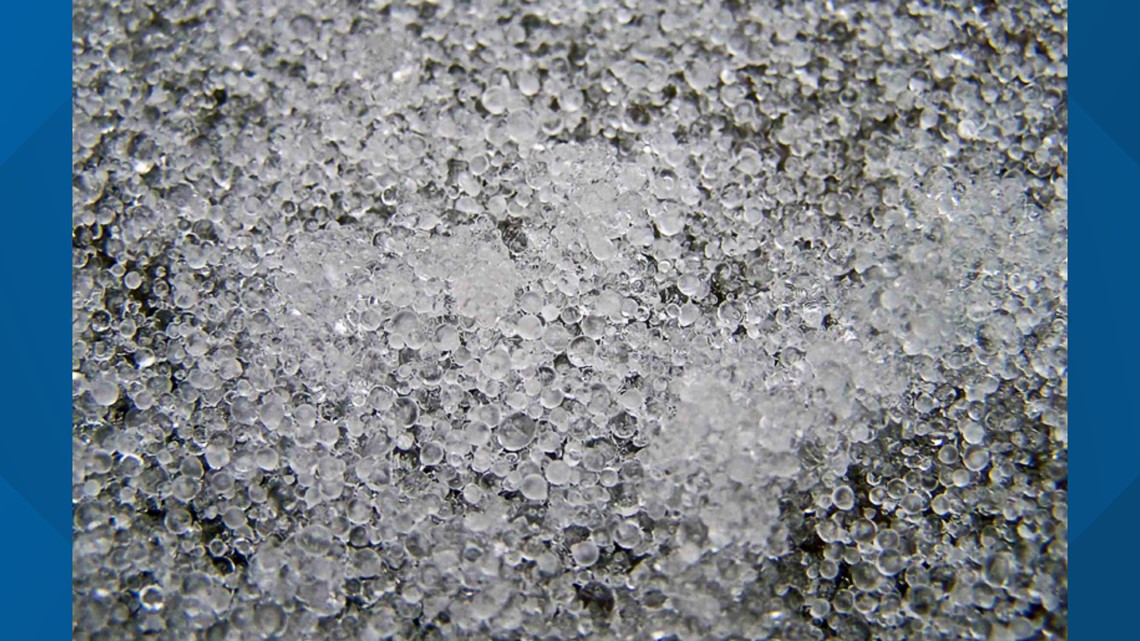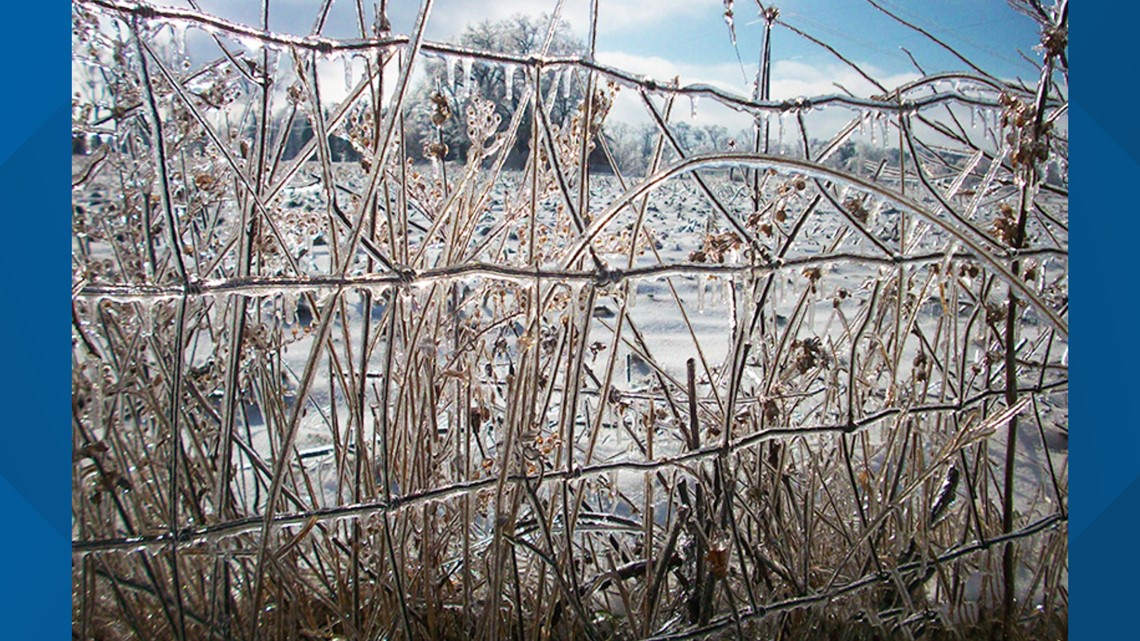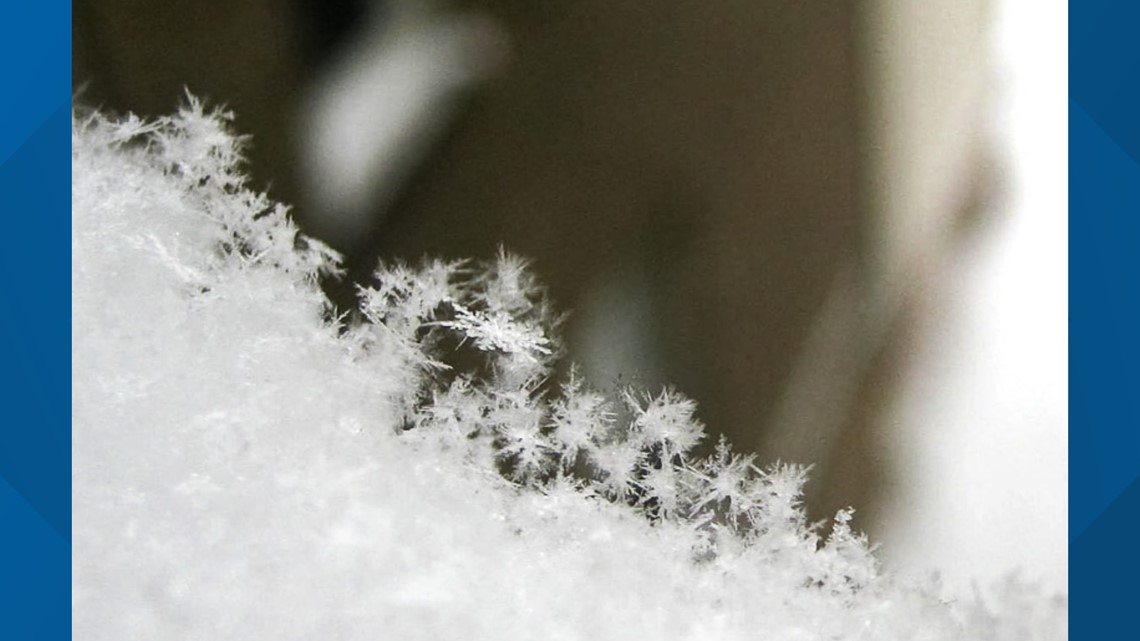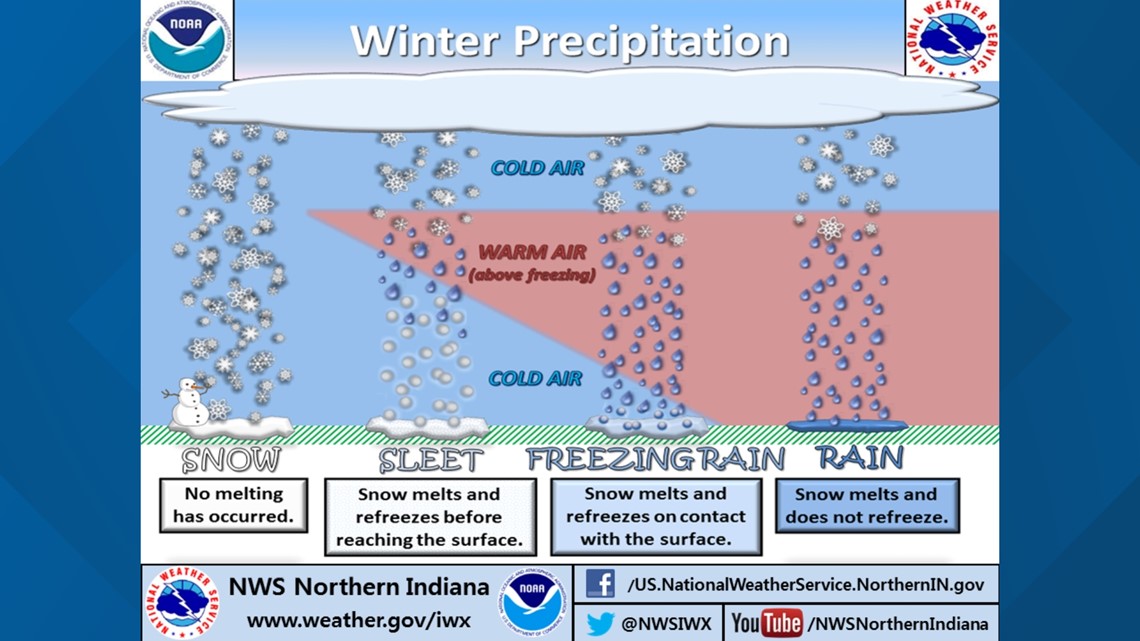ST. LOUIS — Sleet, snow and freezing rain. The St. Louis area is getting all too familiar with these forms of wintry weather over the last few weeks. We’ve experienced one, two or a mix of all three in various waves this month.
But, what exactly is the difference between them, especially sleet and freezing rain? We checked with the National Weather Service for a better explanation on how to tell the difference – and the impact they can have.
What is sleet?
Sleet happens when snowflakes partially melt as they fall through a layer of warm air and then refreeze as they fall through a deep layer of freezing air.
It looks like frozen raindrops that bounce when they hit the ground, your car or a windowsill. Sleet can accumulate on the ground like snow, and it can be measured the same way: with a ruler.


What is freezing rain?
Freezing rain happens when snowflakes go through a warm layer of air and melt completely. These waterdrops then go through a thin layer of freezing air just above the surface but don’t have enough time to refreeze before hitting the ground. The liquid is still very cold and instantly refreezes on contact with anything that’s at or below 32 degrees – coating things like powerlines, tree limbs and sidewalks.
Freezing rain creates a glaze of ice on just about everything. NWS said even light accumulations can cause dangerous travel conditions; heavier amounts can damage trees or bring down power lines.
The weather service said a significant amount of freezing rain that lasts several hours is called an ice storm.


What is snow?
It’s the type of winter weather we see more frequently and don’t really have a tough time identifying. Snowflakes are able to reach the ground – and not turn into freezing rain or sleet – when the temperature is at or below 32 degrees from the cloud base to the ground.


The National Weather Service shared this graphic that shows how the different types of winter weather form as they fall toward the ground.


Get the latest St. Louis area forecast from 5 On Your Side's weather team here.



